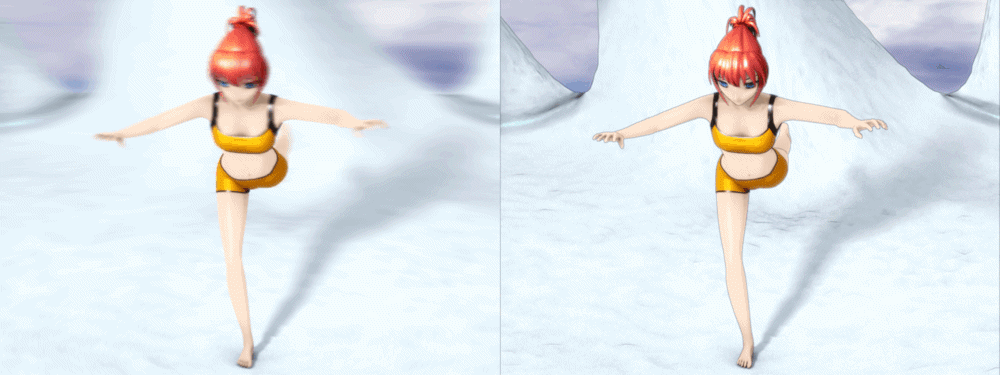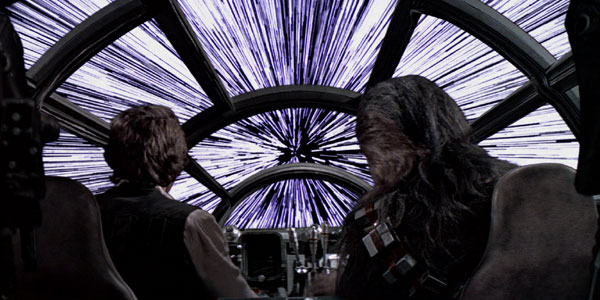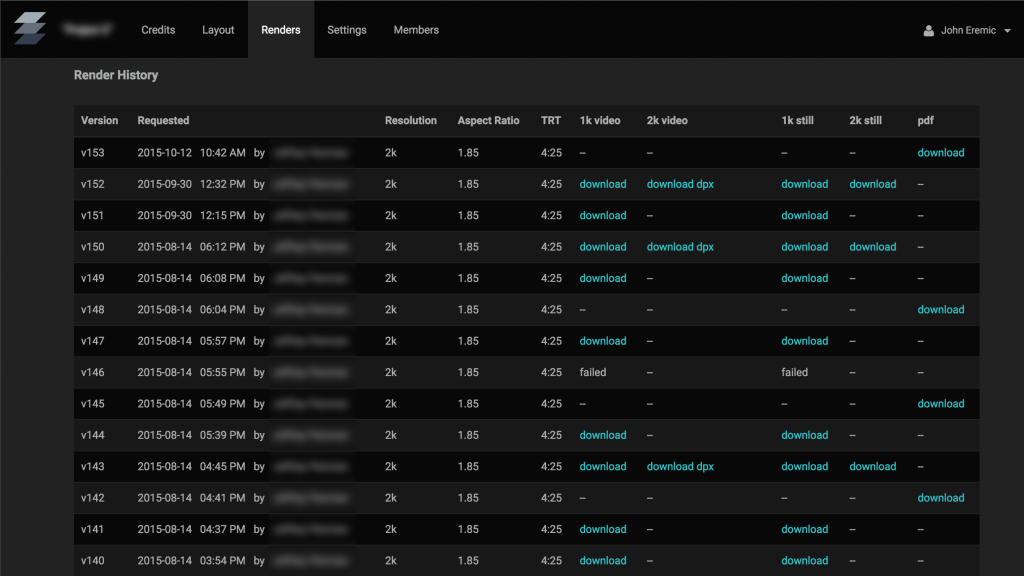Why Are My End Titles Jittering?
It goes by many nicknames: jitter, judder, flicker, flutter, shimmer, stutter, ringing, pulsing, strobing. Here's how to tame it.
Making end titles can be the bane of your existence. For starters, there are the endless revisions:
But those troublesome motion artifacts are even worse. They go by many nicknames: jitter, judder, flicker, flutter, shimmer, stutter, ringing, pulsing, strobing. Taming them can seem like a dark art. Luckily, it’s not.
It comes down to two things. We call them jitter and stutter.
1. Jitter
What does it look like?
Glad you asked:

Subpixel motion -> temporal aliasing -> jitter
What causes it?
Jitter is caused by sub-pixel motion. This means that the number of pixels your credits travel each frame is not a round integer like 3.00, but a decimal like 3.18752.
Sub-pixel motion is accomplished by subtly shifting the pattern of grey (actually, semi-transparent) pixels at the edges of each glyph. Changing those grey pixels frame-to-frame results in temporal aliasing. That’s what makes your end titles jitter.
That shifting pattern usually has a phase—it repeats itself every n number of frames. This yields the typical “pulsing” or “strobing” effect.
How did it sneak into my workflow?
Sub-pixel motion generally comes from two places:
- Your title designer simply keyframed an in- and out-point instead of specifying a scroll speed. This method, while common, virtually guarantees that you’ll land on a non-integer scroll speed.
- You received a clean render, but it was re-sized in post. 95% of our reports of “omg, jitter” come down to this.
Resizing happens when your DI workflow is based off a non-standard raster. For example, we’ve previously written about 2048×1152 being a bad idea. And here’s why: if your end titles were originally moving at 3 pixels per frame, the “1152p” workflow is guaranteeing a scroll speed of 2.8125 pixels per frame in all of your masters. Which, as a reminder, is going to look like this:

Did we mention how we feel about “1152p”?
Even if your post team swears up and down that that your titles are not being resized, be cautious: HD monitors and 2k D-Cinema projectors still have a maximum vertical resolution of 1080 lines. So if you’re not resizing in the timeline itself, it’s still possible that your titles are being scaled in the signal path to the display. The results are the same.
We’ve even seen theaters that run everything through a scaler in the projection booth. This is bad kung fu.
How To Fix It
- First, only scroll at safe integer speeds.
- Second, don’t re-size your end titles. Make separate renders for separate deliverables instead of relying on a single “master” end titles render.
- Third, avoid non-standard rasters in your DI workflow. But if that ship has sailed, you can still request that your post team insert a smooth, DCI-compliant, square-pixel render into your DCP authoring timelines. They won’t love you (or me) for saying this. But it will make your movie look better.
2. Stutter
What does it look like?
The scroll feels herky-jerky. Stepping through the video frame-by-frame, everything looks fine. But at real time playback it seems to be bouncing along instead of flowing smoothly.
What causes it?
Several factors are things are conspiring against us here:
- White on black. This is as high-contrast as it gets, creating an after-image on your retina. Absent any motion blur—which we do not recommend—this can cause your eye to see each letter two or three at a time. Doug Trumbull discovered the same problem when creating star fields for 2001.
- 24p. “Persistence of Vision” is a relative thing. What looks nice for a cinematic scene is not necessarily ideal for typography in motion. But until Ang Lee has his way, we are stuck with this relatively low frame rate.
- Geometrically perfect motion. Scrolling titles contain none of those small, organic imperfections that are inherent to natural human motion and photographic capture. With everything mathematically perfect, every tiny imperfection shows up in stark relief.
How can I fix it?
1. Slow it down. At HD and 2k, you should always aim for 3 pixels per frame (ppf). 4 is already pushing it, and 2ppf is very very slow. 3ppf is your sweet spot. For UHD or 4k, aim for 5-7ppf.
2. Make better use of horizontal space. End titles usually waste a lot of space. Using more columns and doubling up blocks where possible will reduce your end titles’ vertical size and allow you to scroll slower.
3. Reduce contrast. End titles are generally delivered at 100% white, but in a dark theater, absent any other elements, even 60-70% grey will still read as white. And it can make a world of difference.

Just spin that middle wheel counter-clockwise.
Other Considerations
A word on motion blur: don’t do it. It’s great for certain VFX renders:

By Niabot – Own work, CC BY-SA 3.0
But since both typography and star fields consist of small points of light set against a black screen, motion blur isn’t very useful unless you want this:

Motion blur is not always the answer.
A word on computer screens. Some TVs and pro monitors support refresh rates that are multiples of 24 — like 96 or 120. But your computer screen refreshes at 60Hz. That does not divide evenly into 24 or 25. Different video frameworks, like QuickTime, will try to compensate for this in various ways, but you will never see a perfect representation of a 24p scroll on a computer screen. Them’s the breaks.
Conclusion
Juggling these factors can be difficult, especially while trying to hit a specific TRT and banging through endless rounds of revisions. It’s why we built Endcrawl—which handles the motion issue in a unique way, and connects everything to an unlimited, on-demand cloud render engine.
If you prefer to roll your own end titles, we hope this information is useful. But if you have a film in production or post, and would like to take Endcrawl for a spin, we’d love to set you up.
Hey, while you're here ...
We wanted you to know that The End Run is published by Endcrawl.com.
Endcrawl is that thing everybody uses to make their end credits. Productions like Moonlight, Hereditary, Tiger King, Hamilton—and 1,000s of others.
If you're a filmmaker with a funded project, you can request a demo project right here.
Why the RED Camera was (and was not) a Disruptive Innovation
77 SharesShare51Tweet24Share2BufferPocketMaking end titles can be the bane of your...

